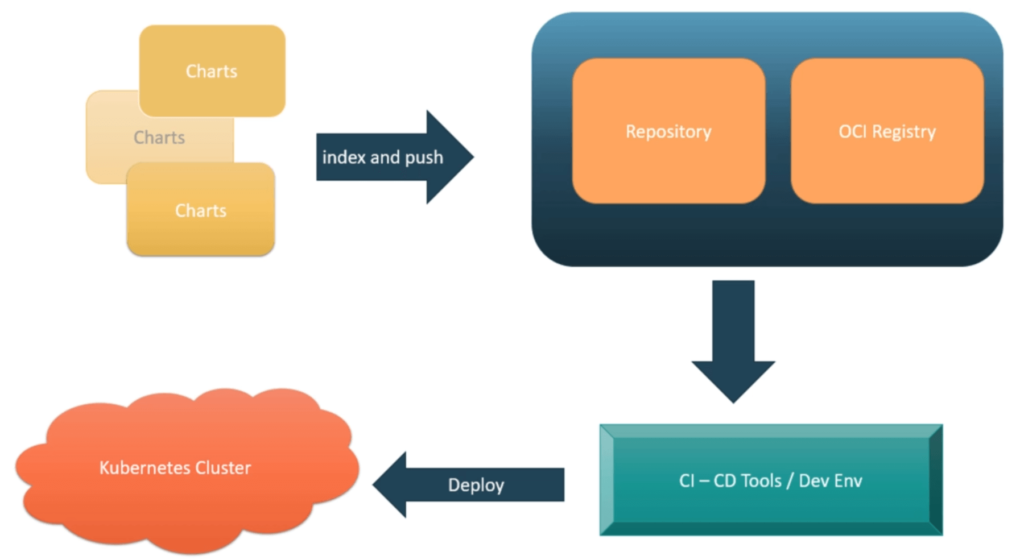Helm Repository Workflow
In this tutorial, we are going to discuss the helm repository workflow. Within the charts workflow, we will come across these terminologies that are repositories and registries a lot.
Let us have a quick overview of what role it’s going to play and where it will come into the picture within the workflow of the chart.
Before getting into the details about the chart repositories, Let’s understand the workflow, assume I do have n number of charts.
Already We discussed how to create the charts and various building blocks of the charts and using those building blocks; assume I do have n number of charts, and those charts need to be kept in a centralized location. So that the other tools, like CI/CD tools or other developers, can make use of it.

Registry is OCI compatible
And that particular centralized location we call that as a repository or registry. A registry is OCI compatible, That is, Open Container and image standard registry. And that’s what it’s going to be followed within the docker.
I can manage the charts within the registry and have my repository as well. The traditional way of doing it is, using the repository, and nowadays OCI registry is also supported.
We are going to see the demo for both of these options. Once I have the charts within the registry or repository, I can manage chart versions, maintain chart versions, pull whatever the required chart version, and give permissions so all such control we can do.
You can visualize a registry or repository as a source control system where the charts will be managed and shared across the users. The CI/CD tool or development tool will come into the picture to pull the chart it needs and deploy it into the Kubernetes cluster.
This is how the general workflow looks like, how the charts would get deployed into the Kubernetes cluster.
In this section, we will have a detailed discussion about setting up our repository and using GitHub pages or Amazon Cloud to host the repository. And make use of different versions of the charts within the repository using the demo.
Along with that, we will see how to use the registry as well. For that, I will be hosting a Docker registry, adding the charts within it, and managing the versions within the registry as well.
So this particular section, we’re going to concentrate more on this specific area, where how to set up our repository, manage those repositories and add the charts within them, How to visualize, what are all the versions available within it, what are the charts available within it.
Basically, the entire chart management within the repository we are going to do in this particular section.